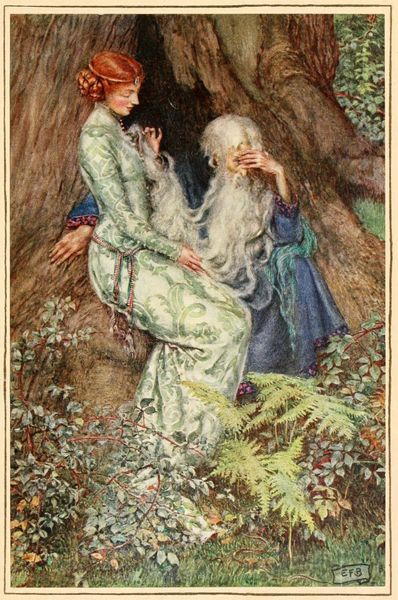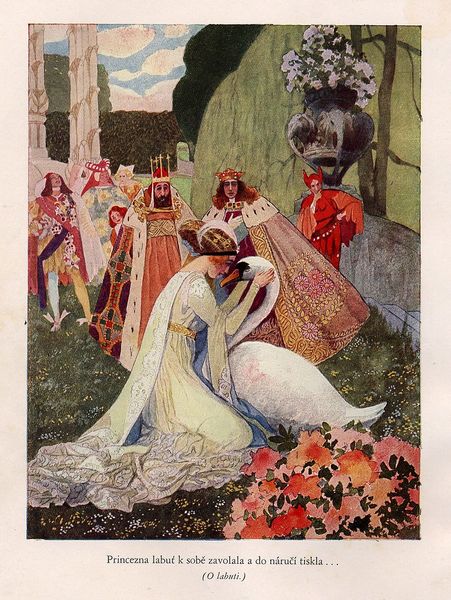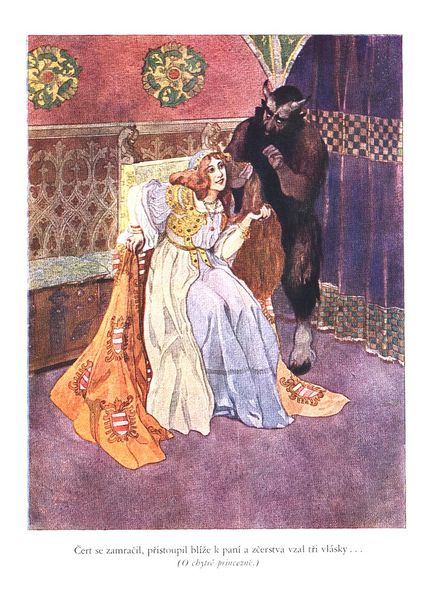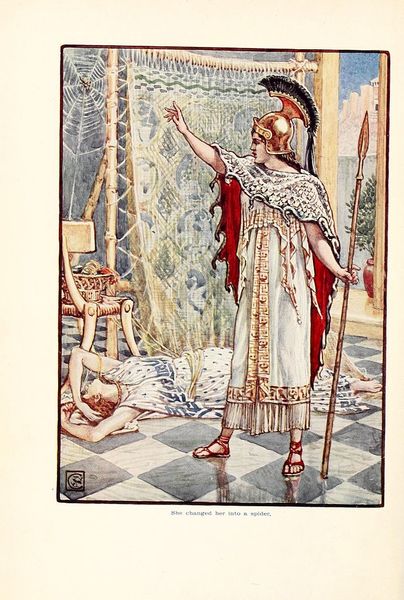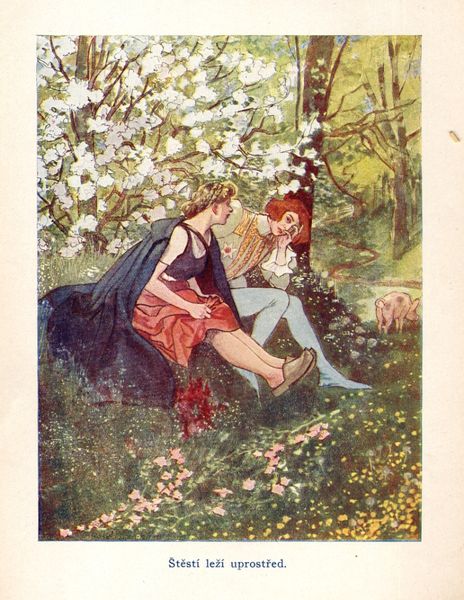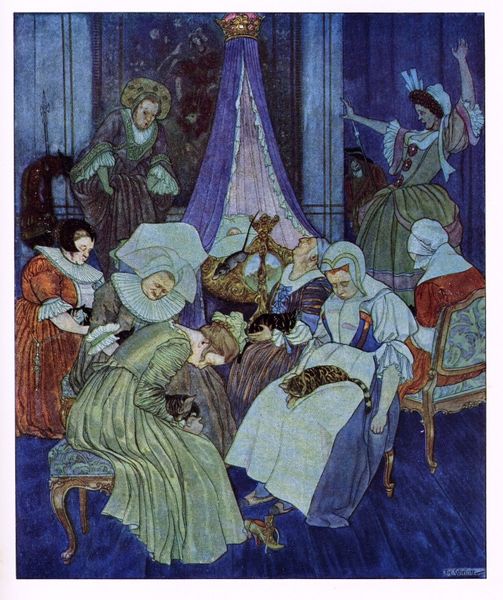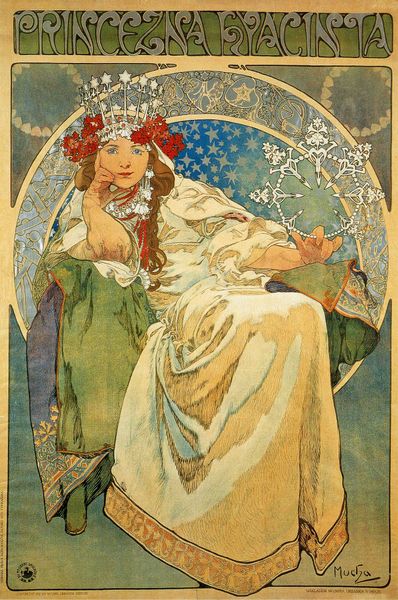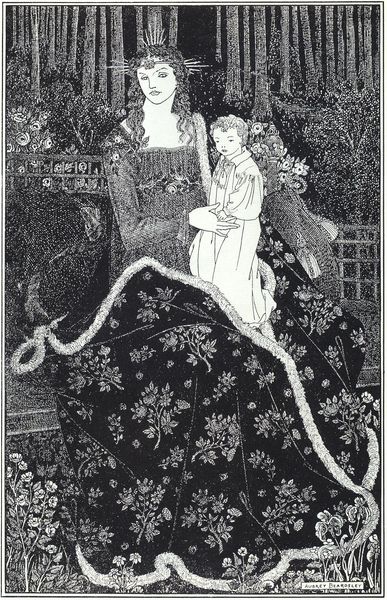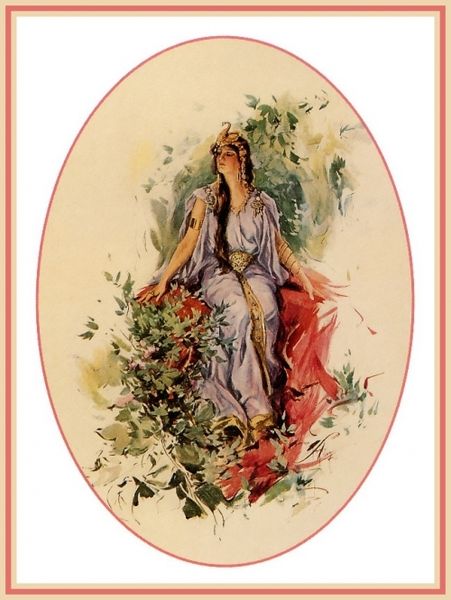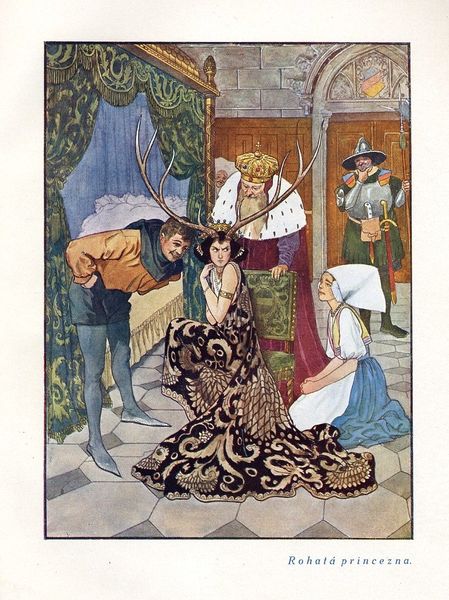
painting, watercolor
#
portrait
#
art-nouveau
#
painting
#
landscape
#
figuration
#
watercolor
#
watercolour illustration
Copyright: Public domain
Editor: This is Artuš Scheiner's "Illustration for Božena Němcová's Fairy Tales", and while it lacks a precise date, it's done in watercolour. I find the overall scene quite dreamlike, with a princess adorning herself in finery by a spring. How do you interpret this work? Curator: I see this piece as more than just an illustration. The positioning of the female figure, surrounded by the natural world, prompts us to consider the intersection of gender, identity, and the environment within the narratives of fairy tales. Considering Božena Němcová was a significant figure in the Czech national revival, known for her advocacy for social justice and female empowerment, how does Scheiner's image either reinforce or challenge societal expectations of women at the time? Editor: That’s a good point about Němcová and national identity. The princess is beautifully adorned, suggesting wealth, yet she’s alone in a seemingly wild space. Does that speak to the complex role of women in national narratives? Curator: Precisely! Are we looking at a woman who embodies national ideals of beauty and purity, or one who is isolated and constrained by them? Consider also the absence of a male figure. Where is the Prince Charming? Does this perhaps suggest female agency and self-determination, even within the seemingly restrictive genre of fairy tales? How does the surrounding landscape add to this sense of both freedom and constraint? Editor: It's definitely something to consider. Thanks, I hadn't thought about the national and feminist layers so directly. Curator: Exactly! Fairy tales are never just simple stories; they reflect deep cultural anxieties and aspirations related to identity, gender, and power. Engaging with that, especially with consideration for intersectionality and critical theory, will deepen one's appreciation of even something that appears to be merely illustration.
Comments
No comments
Be the first to comment and join the conversation on the ultimate creative platform.
